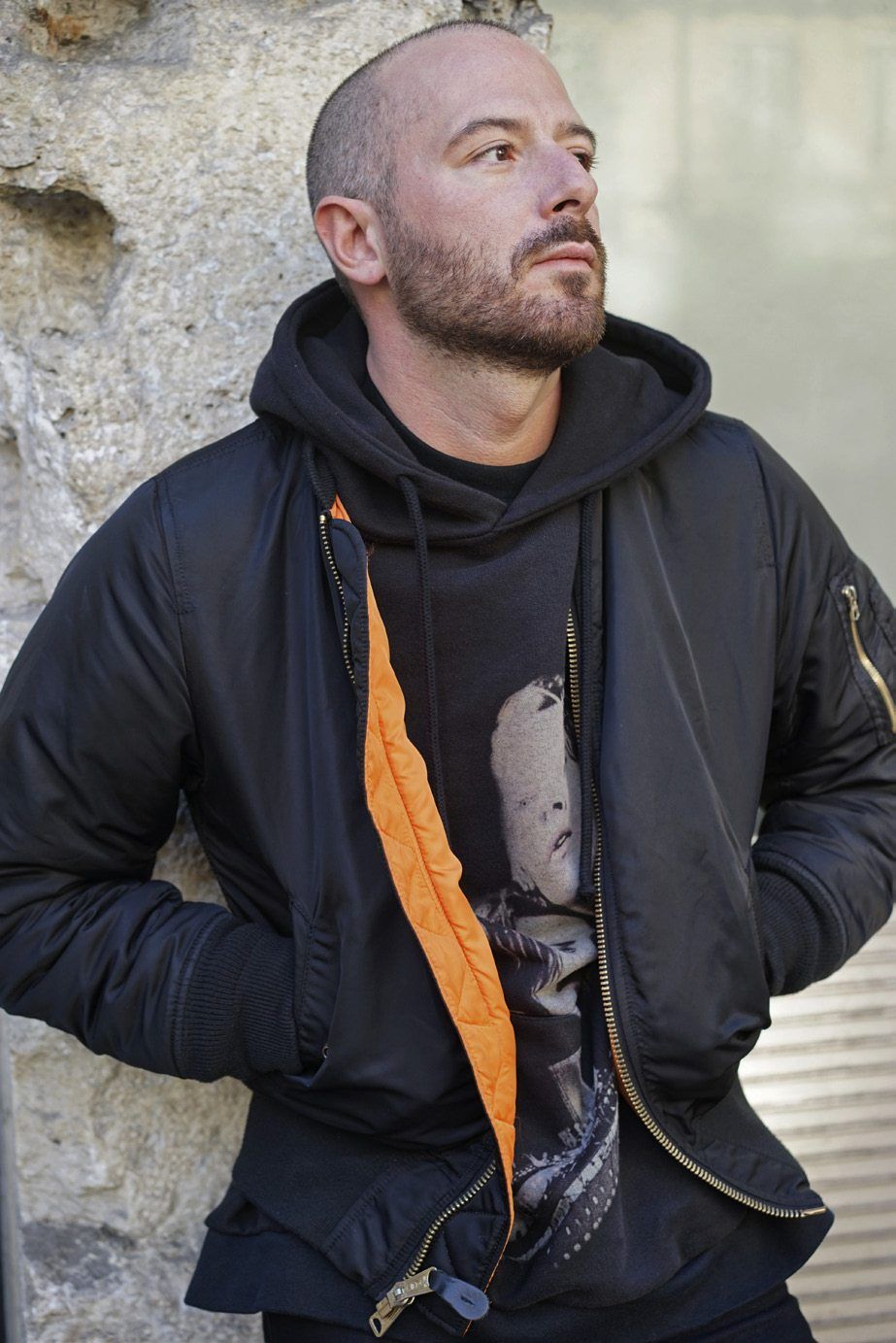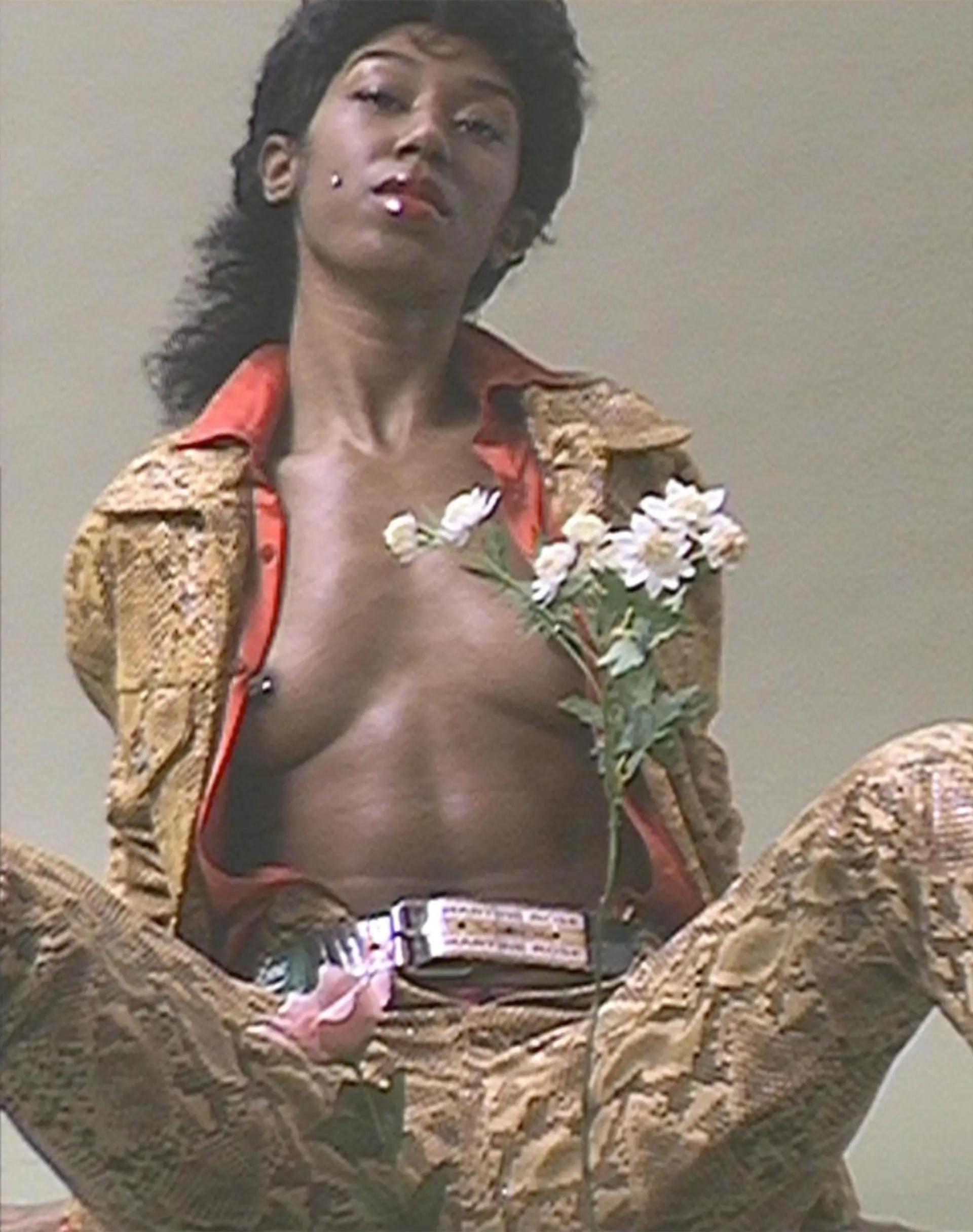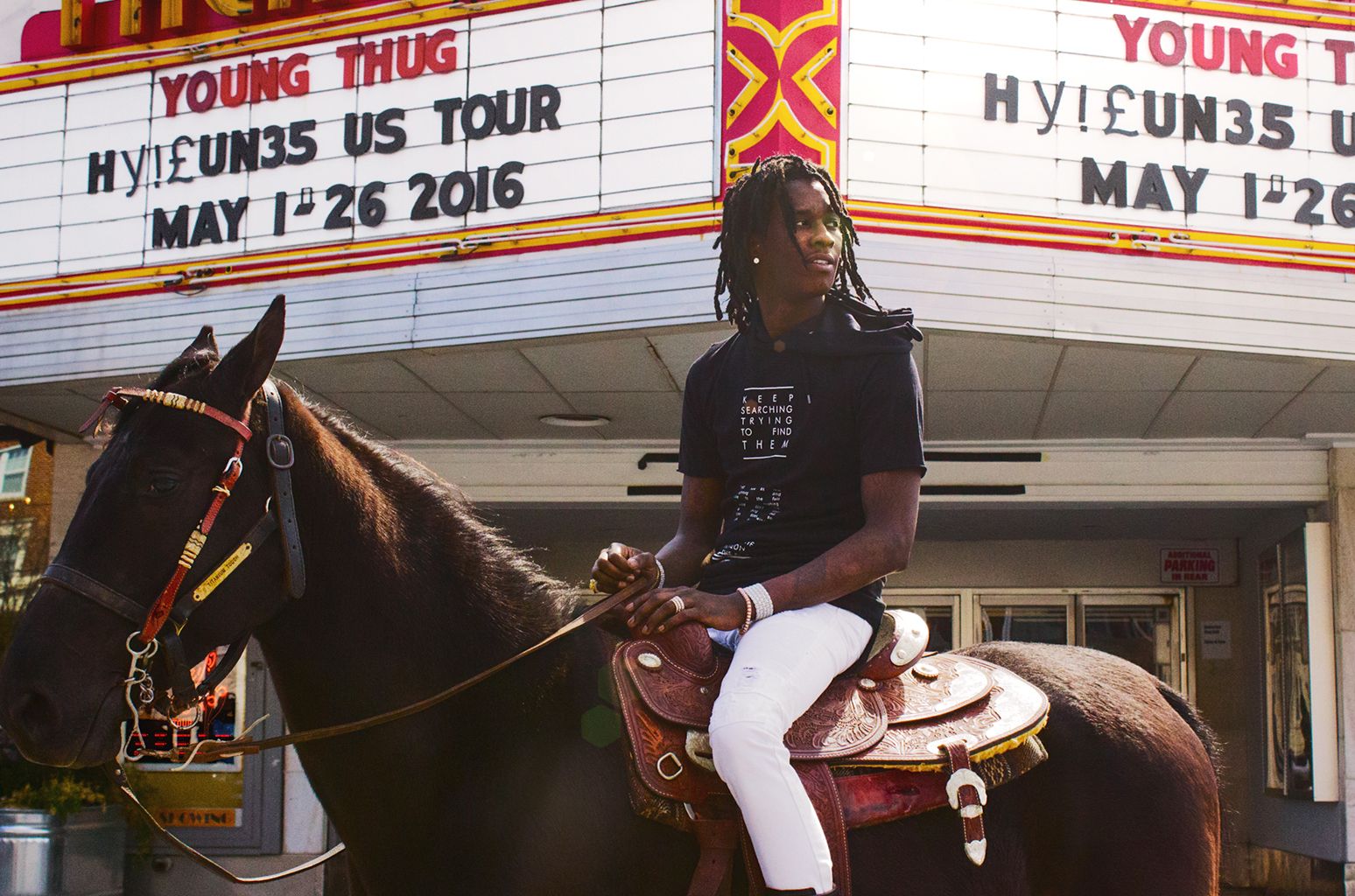The TRUMP-BALENCIAGA Complex
|Kolja Reichert
Does right-wing populism have a better understanding of culture than the creative class? Recent works by artist Hito Steyerl and a book by Cambridge Analytica whistleblower Christopher Wylie demonstrate what the Trump and Brexit campaigns have learned from fashion.

I. The Aristocratic Influencer
By late 2019, we had reached the point where even Queen Elizabeth II was looking for a social media manager. The position, posted in December and soliciting applications due on Christmas Eve, was not the Royal family’s first valiant attempt at online management in defense of their reputation. The social media job had already been advertised the previous May, meaning that either no one suitable was found, or that the Christmas post was strategically timed, part of a well thought-out campaign to keep the guarantors of Britain’s image on everyone’s lips. When the announcement was posted – and subsequently went viral – it was only shortly after the election that propelled Prime Minister Boris Johnson’s public persona even closer to meme status. Long before taking over government, Johnson had already been someone who, like Donald Trump in the United States, only needed to raise his brows to get air time, making him a serious threat to Buckingham Palace as a contender for the main voice of British identity. In any case, the subjugation of the aristocracy to the young representational system of social media was, before Covid-19 lockdowns pushed everyone behind screens, already well underway.
As platforms, social media appear radically democratic. They hand over the aspect of power that is dependent on reputation, not on laws, to ordinary individuals, who have the capacity to reinforce it with every subscription, like, comment, and forward. This framework bears a striking resemblance to the representational system of absolutism described by German philosopher Jürgen Habermas in his 1962 history of bourgeois public life. Published in English as The Structural Transformation of the Public Sphere: An Inquiry into a Category of Bourgeois Society in 1989, the book describes how the public sphere developed as a bourgeois counterweight to monarchical government authority, slowly growing out of debating clubs on literature and art. Yet the public sphere of social media reproduces the aristocratic model. Kim Kardashian appears on your Instagram feed just as Louis XIV would have appeared at court festivities, representing no people, only the sovereign’s own power, measured today in clicks and followers.
The difference is that today, you don’t need to be of royal heritage to become an authority online: anyone can do it in theory, though if Buckingham Palace’s job search proves anything, it’s that it’s easier said than done. The Queen must not only compete with Kanye West and Donald Trump, but with fashion brands such as Balenciaga, who have the same media tools at their disposal. A ruler’s power – that is, the Queen’s reach – will depend on how she manages her brand, and what “disruptive” self-stagings and brand features she uses along the way.







II. Nothing Left Unbranded: The Moebius Strip
Johnson’s landslide victory – which feels like ages ago now – and the final coup de grâce, Brexit, once again raised the question: how did politics, as a negotiation between opposing interests, become replaced by brand competition, campaigning to reframe the fight against public interest as public interest? Artist Hito Steyerl, along with her collaborators Miloš Trakilović and Giorgi Gago Gagoshidze, provided a viable answer with MISSION ACCOMPLISHED: BELANCIEGE, which premiered late last year at Neuer Berliner Kunstverein (NBK). Looking back at the histories of privatization, image circulation, and identity politics during the thirty years since the fall of the Berlin Wall, the work posits that Trump and Brexit were unleashed on society in the same way that a fashion brand launches a new collection. Once you trend on social media, you’ll be trending anywhere else. More critically, though, the meaning, content, and success of a brand are created by users themselves, their unpaid labor leading to a new model of exploitation that is hard to track, and particularly tricky to stop.
The work cites cultural figures, moments, and phenomena as evidence, including David Hasselhoff in front of the fully occupied Berlin Wall in November 1989; Vetements founder and Balenciaga creative director Demna Gvasalia – and his Balenciaga version of the Ikea shopping bag; the meteoric rise to prominence of Serbian Rogue star Jelena Karleuša, who gained two million Instagram followers after alleging that Kim Kardashian stole her look in 2016; Bernie Sanders’ much-memed appearance on the late-night show “Desus & Mero,” when his eyes popped out of his head upon learning that Kanye West’s Nike sneakers were being traded for $11,000; and Christopher Wylie, the trend researcher and fashion expert whose recent book Mindf*ck reveals how he helped Trump campaigner Steve Bannon fuck with the brains of potentially 87 million Facebook users.


“The meaning, content, and success of a brand are created by users themselves, their unpaid labor leading to a new model of exploitation that is hard to track, and particularly tricky to stop.”
On three upright screens, displayed within the EU blue stage set where the work was originally recorded as a lecture performance, the three artists present a theory of media, fashion, politics, culture, economics and history that, through stark confrontations of civil wars and fashion shows, creates a feeling of vertigo. As always with Steyerl – and her sought after class at Universität der Künste Berlin, where Trakilović and Gagoshidze studied – this is theory in freefall; theory for a world of preventive crime prediction and anticipatory governance, where images no longer represent but predict and manufacture reality, and where people don’t simply sit in front of screens anymore but are themselves nodes in a network flooded with cultural content that they consume and forward. In this world, every gaze is a source of commercial speculation, being tracked, stored, sold, and retargeted. As Trakilović puts it toward the end of the 45 minute video: “Pictures become frames or containers for invisible trails of information and the source material for rampant commodification.” MISSION ACCOMPLISHED: BELANCIEGE is a mind-blowingly accurate theoretical model for the trap we’ve stared ourselves into.

Steyerl’s first solo institutional exhibition took place at the NBK, too, back in 2009. Curated by director Marius Babias, the show included After the Crash, a video in which aircraft are shown repeatedly plummeting to a disco soundtrack, tracing the economical and symbolic exchanges between the aeronautic and entertainment industries. Also featured was Lovely Andrea (2007), in which Steyerl searches Tokyo’s pornographic publishing scene for a photo taken of the artist in Japanese bondage – an attempt to reclaim her experience of a one-off modeling gig as a film student, accentuated by clips of Spiderman spinning, imagery from Abu Ghraib, and a voice-over considering the BDSM relationship between bodies, power, and images. The show kicked off Steyerl’s international reputation, which eventually made her a favorite of institutions seeking to enhance their critical profile –often at the risk of getting their hands bitten. For example, Steyerl used the press conference for her opening at the Serpentine Galleries in April 2019 to shed light on one source of Serpentine CEO Yana Peel’s fortune: the NSO Group, a spyware company selling surveillance software to authoritarian regimes. By June of the same year, Peel had stepped down. Equally memorable was Steyerl’s clandestine lecture performance in a theatre space at Istiklal Cadessi during the tense opening days of the 2013 Istanbul Biennial, in the aftermath of the Gezi park protests. The work traced the source of Turkish ammunition – used in the same clashes with the PKK that had killed her childhood friend Andrea – to an arms manufacturer owned by Koç Holding: the biennial’s main sponsor.
MISSION ACCOMPLISHED: BELANCIEGE is a likewise brilliant mirroring of the circulation systems between the industries of war, art, and media. From footage of the civil wars that followed the collapse of the Soviet Union, the speakers zoom in on the figure of Demna Gvasalia, who, long before founding Vetements, had fled Georgia as a child refugee. Only three seasons into the brand’s existence, Gvasalia’s DHL shirt and forest green “Polizei” hoodie made him the most relevant, cunning, exciting designer around, turning creative signature inside out, substituting stylistic refinement by disruption. “Vetements was like the [defense ministry’s research agency] DARPA of fashion,” Gagoshidze states in the video, “a lab to test fashion politics, and to playtest a zombie apocalypse skinhead aesthetics.” A press photo displayed to illustrate the idea showed Kim Kardashian in Vetements visiting Trump at the White House.
“Images no longer represent, but predict and manufacture reality.”
Gvasalia took his Vetements methods with him when he replaced Alexander Wang as head designer for Balenciaga – a label popular with politicians and pop cultural icons in Eastern Europe. Steyerl’s video combines images of these public figures wearing Balenciaga clothing with looks from the luxury fashion house’s 2017 men’s collection, which famously hijacked the graphic identity of Bernie Sanders’ failed presidential campaign. Bernie might not have won, but his brand, albeit in a highly privatized, appropriationist context, certainly did.
MISSION ACCOMPLISHED: BELANCIEGE also shows spinning drone footage from the Balenciaga women’s runway show last September, which took place in a soundstage version of the EU parliament, built in Luc Besson’s Paris film studios. Stepping up their game yet again, Balenciaga’s circular model parliament – reminiscent of the circles of hell in Dante’s inferno, as the artists note – warped into a kind of Moebius strip, the signature EU blue recalling the Ikea shopping bags that Balenciaga remade and retailed at 2,145 Euro a pop back in 2017. It is not hard to imagine a world in which nothing outside is left unbranded by Balenciaga.


III. The Balenciaga Principle
What happens when aesthetic hierarchies are toppled, but economic ones remain intact? Does then everything become a resource for the solvent? Does distinction withdraw into sheer buying power? Or, as Gagoshidze puts it, recalling his own childhood memories of ill-fitting donated clothes passed down from sibling to sibling in post civil war Georgia: “How come Balenciaga items overcame the law of gravity and trickled up to the bodies of the one percent? While people who wore those clothes before keep trickling down?”
Gvasalia, child of a civil war, turned fashion inside out – and took with it the very public that gives luxury goods their value. “My generation, born in ’89, got to know the world not by walls but through transparent screens,” Trakolovic elaborates, himself on screen, next to a screen recording of a scrolled down Balenciaga Instagram feed. “It‘s a generation that understands usership but has problems with meaning. A vast, so-called ‘free’ generation of the free market economy that grew up with some freedom of movement, freedom of expression, and no future. Balenciaga and Vetements appeal not only to the global elite, but to this post ‘89 generation specifically, because these brands are crafted on meme-bait strategies. They test on principles of framing and reframing, thereby co-opting consumers in creating hype.”
In a video mimicking a YouTube tutorial, Steyerl holds up an Ikea bag cut, turned, and glued back together – again, as a Moebius strip. This, she explains, is the “Balenciaga principle,” which follows the principle of privatization in the former states of the Eastern bloc: you don’t find a plot of land and designate its area as private property; instead, you designate everything around it to be. It isn’t the form of the bag that is privatized by Balenciaga, Trakolovic continues, but everything surrounding it: “First of all, the labor of image making, uploading, sharing, but also other out-of-frame activities and user preferences that are tracked, accumulated, harvested and mined.”

So what do Trump and Vetements have in common? Enter Christopher Wylie, who, as researcher at the London-based research and campaign firm Cambridge Analytica, won Breitbart’s CEO Steven Bannon as a customer during a hotel room meeting by displaying the live online activities of every citizen in Trinidad as a map of flashing dots. Wylie’s book creates a similar sense of vertigo to the work of Steyerl, Gagoshidze, and Trakilovic, conveying the cold cybernetic perspective of a random experiment in which every online user is a potential guinea pig. “By adding quantified cultural signals,” Wylie recalls of Cambridge Analytica’s business model, “we were verging on a new area akin to ‘cultural finance.’ We thought that if we got it right, we could run simulations of different futures of whole societies.” His assumption that political changes follow in the steps of cultural ones was in tune with Bannon’s goals for Breitbart. “Political extremism, for example, is a cultural activity with parallels in fashion,” writes Wiley. “They’re both based on how cultural information proliferates through the nodes of a network.” Critiquing Wylie’s reductive conception of culture won’t save us here: this is not a theoretical issue, but rather one of practical application.
“You don’t find a plot of land and designate its area as private property; instead, you designate everything around it to be.”
Wylie appears in MISSION ACCOMPLISHED: BELANCIEGE in excerpts of his lecture “Fashion Models and Cyber Warfare,” delivered at the 2018 Business of Fashion Voices conference. In the talk, which can be found on YouTube, he explains how he applied his theory of fashion to the Trump campaign. Trump, he says, functions like that most polarizing garment of the 2000s: the Croc. The once notoriously hideous shoe only “made it” once Balenciaga released an even uglier version in 2017. Which supports the theory that a consumer needs to see a product three times: once on the catwalk, then in a magazine, and finally as a packaged product in the shop. “This dynamic of shock and subsequent normalization was what Trump’s campaign banked upon,” explains Steyerl. “With data hijacked from Facebook users, Trump was shown repeatedly and in numerous variations in tailor-made and targeted ads. When Trump started trending, his PR machinery kept things moving forward.” Wylie visibly enjoys looking back on his role in the venture: “I became Icarus,” he says with unbeatable egotism, “and I flew to the sun, and I dragged billions of people with me. And it was from this conversation, this folly, that the world then burned.” Wiley, the self-obsessed self-campaigner – who has meanwhile been hired for H&M as AI expert for sustainability – furthermore puts the ethical responsibility on the audience: “We depend on you guys frankly, not only to make our culture, but also to protect our culture. We are in a cultural war, you guys have created the battlefield. And it’s up to you whether Trump or Brexit or the Alt Right become the Crocs (quick, fast, and regrettable) or the Chanel (ensuing and iconic) of our political age.”
Are we seriously to conclude that Trump’s win was the result of an enormous feedback disorder, created less by political intention than by our willful participation? By our simple engagement with a constellation of media platforms that treat users like livestock, culling their wishes, modifying them slightly, and then feeding them back to the masses? The more we look at the spectacle with disbelief, the framework implies, the sooner we’ll find ourselves in its center, like a camera filming itself in a mirror.


IV. Proletarians of All Identities, Unite. Or, Team Croc vs. Team Chanel
The Moebius strip is a recurring motif in Steyerl’s work, spinning crashing planes into film props, twisting bondage scenes into insignia for mass media, merging the bullet with the cultural institution it so often funds. Steyerl began making documentary film in the tradition of Harun Farocki and Alexander Kluge; as her career has evolved she has tested, applied, and in doing so commented upon each new technology that has impacted the conditions of image production and circulation. The motif of two opposing forces encircling and mirroring each other has remained consistent throughout her practice – right up to the artist’s riff on Balenciaga’s riff on the EU parliament, reconstructed at the nbk and in which I sat and watched MISSION ACCOMPLISHED: BELANCIEGE last year. In this collaboration, wherein Steyerl’s own signature – just as Gvasalia’s has with Vetements and Balenciaga – recedes into the network of the very meme strategies it is critiquing, baiting our desire to recognizing the cultural content we already know in ever evolving manifestations.
Identity has become the central currency of today, and this work serves to highlight its close ties with the dynamics of digital surveillance. “Identity is currently an opioid for the masses,” says Steyerl. “It is a free handout for people who have little else. But like a lot of seemingly free stuff in digital economies it comes with a lot of toxic strings attached. Above all, the idea that one can’t change. Identity means that if you are poor, deal with it, apparently you are born this way. Identities are a trap to keep people in their places and divide them, for example as Team Croc vs. Team Chanel.” The question, then, is how to remodel this loop designed to elevate content while still fixating users – a loop so easy to exploit, fueled by the exploited themselves, and more precisely, by their constant search for individual identity. “The only way out is to change the rules of the game,” Trakilovic concludes, finding optimism in a banner he photographed at the first Pride Parade in Sarajevo last September. The banner, included in the nbk exhibition, reads: “Proletarians of all identities, unite.”
“The more we look at the spectacle with disbelief, the framework implies, the sooner we’ll find ourselves in its center, like a camera filming itself in a mirror.”
Around the corner from the Sarajevo Pride Parade, which was being protested by right-wing identitarian extremists, Trakliovié also took a photo of a shoe in a shop window: a knock-off Balenciaga, the brand name misspelled as “Belanciege.” Steyerl decided to celebrate the failed appropriation, and claimed Belanciege as the name of a future enterprise whose brand value will not merely be created by its users, but also owned and managed by them. During the exhibition, this hypothetical brand was prominently advertised in the street-facing windows of the Kunstverein, which were plastered with white “Belanciege” logos on black foil; later, the campaign appeared in print, in a double-page spread in the global street newspaper Arts of the Working Class.
In the video, Steyerl is about to elaborate on how exactly such a brand might work, when she is interrupted by an incoming call: as she speaks off to the side, we understand that it is Balenciaga calling, offering her an influencer deal. The story would have been incomplete if Balenciaga hadn’t later asked in earnest. The artists declined.



Credits
- Text: Kolja Reichert
- Translation: Shane Anderson



